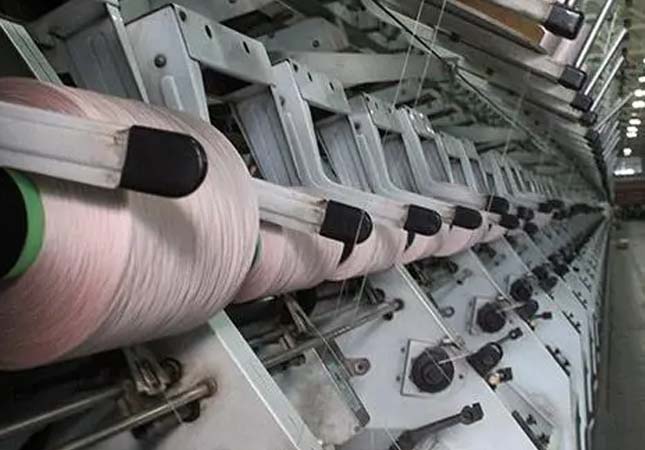If one end of the spinning yarn is held and the other end is turned around, then a yarn is formed by this way that is called twisting process. Twisting is the process of twisting the drawn thin slice of yarns by using a rotary motion, so as to fix the longitudinal connection between the fibers, which can reduce the fluffing or breakage of silk threads,further avoid generating some fabric defects that even cannot be avoided by fabric strip cutting machine.
Twisting utilizes the bending and twisting of fibers. Bending creates coils and twisting creates twists. If one end of the fiber strip is fixed and the other end is twisted, there is a certain tension to make a twisting back, while if there is no tension, the twisting of the fibers may translate into bending, which make the fiber strips twist together then form a knot shape. Therefore, tension and torsion are necessary conditions for a twisting process.

Purpose of Twisting
Twisting is to increase the strength and wear resistance of the silk thread, reduce the fluff or breakage of the silk thread, improve the fastness of the fabric and the cohesion before dyeing. Twisting make the silk thread have a certain shape and fancy effect, so that the fabric obtain the appearance effects of refraction, wrinkles, loops, knots, etc.
Twisting is also for improving the elasticity of the yarns and the fabric's anti-wrinkle ability and other wearing properties.
Twisting is the main method for strengthen the short fibers, and also has some other effect on the filament. The amount of twisting yarn, the twist direction and the degree of twist in the fabric have a great influence on the appearance and performance of the product.
Types of Twisting
Twisting can be divided into dry twist and wet twist according to the specific process, and the dry twist can be divided into single twist and multi twist. Some special fabrics require multiple strips of strongly twisted mulberry silk to be used as warp yarns or weft yarns, which is difficult to use dry twist processing. Thus commonly we will choose the wet twist method that can exceed 3000 twists/m.
Twisting can also be categorized into Z twist and S twist according to the twit direction. S twisting is the twisting direction is from bottom to top, from right to left after the fiber in the single yarn being twisted; while the Z twist means the twisting direction is from bottom to top but from left to right.
Main Twisting Parameters
1. Yarns
The two cross-sections of the yarn produce an 360° angular displacement, which generally called twist back. The number of twists back in per unit length of yarn is called twist degree. China has specific cotton yarn adopts number system for twisting, that is, it is expressed by the number of twists within 10 cm yarn length; combed wool yarn and chemical fiber filament use the metric system twist, that is, it is expressed by the number of twists per meter. Additionally, there is also an imperial count system twist expressed in turns per inch.
2. Twist Width
If regard the cross section of the yarn as a circle, the angles between the fibers at different radii and the axial direction of the yarn are different, that is called”twist width”, expressing the above situation.
3. Twist Direction
Twist direction refers to the inclined direction of the fibers in the single yarn or the single yarn in the strand after the yarn being twisted. It is generally divided into Z twist and S twist.
After twisting, the twist direction of the yarn is from the lower right corner to the upper left corner, and the inclination direction is consistent with the middle of "S", which is called S twist or smooth twist; the yarn twist direction is from the lower left corner to the upper right corner, and the inclination direction is the same as the consistent middle part of Z is called Z twist or backhand twist. Generally, the single yarn is usually Z twist, and the stranded yarn is used S twist.
Twist usually be selected according to different fabric applications. If the warp yarn needs to have higher strength, the twist degree should be larger; in the contrast, if the weft and knitting yarns need to be soft, the twist degree should be smaller. Crepe fabrics are required to be smooth, stiff and cool, so the twist degree of the yarn should be larger.




